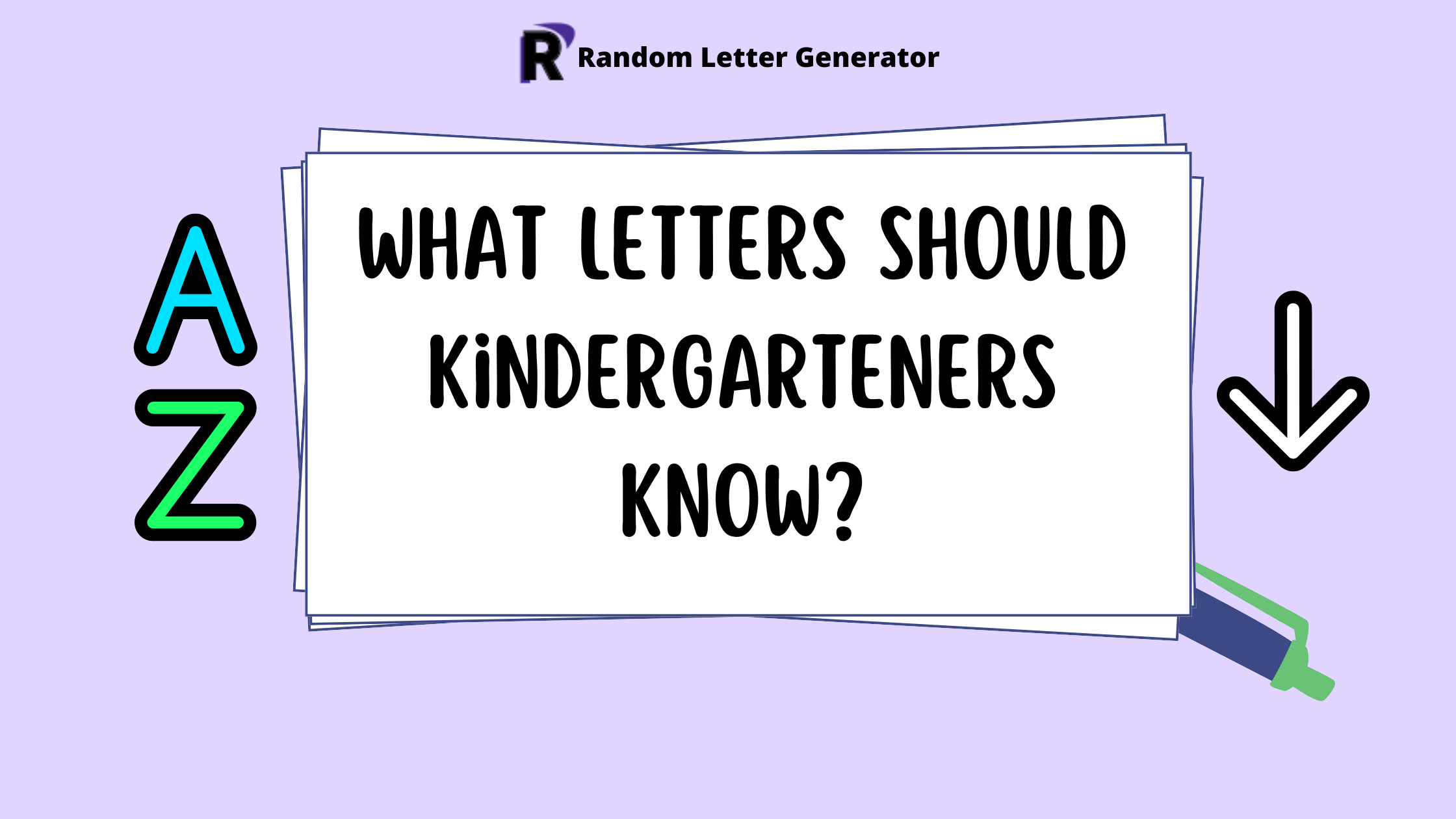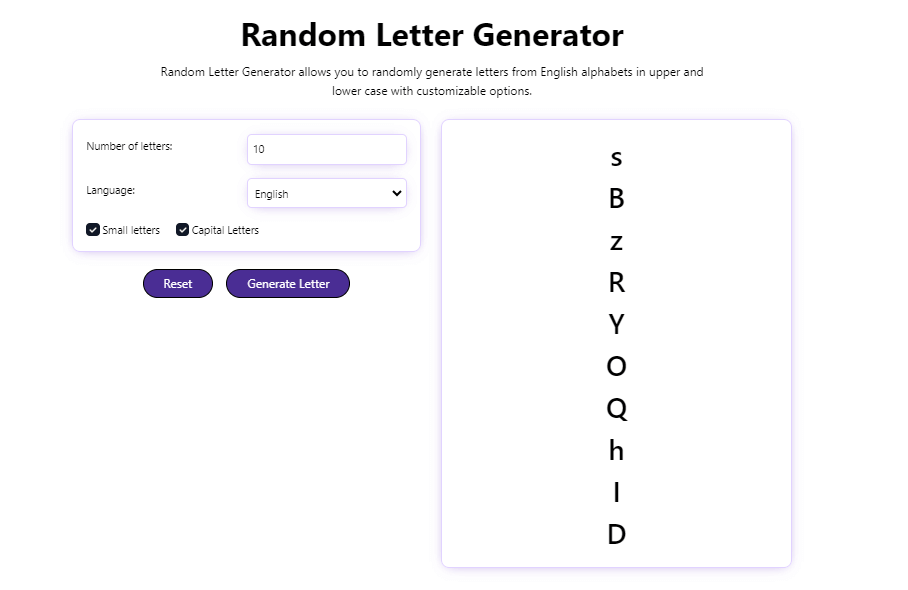
Published: 14,Sep 2024
When children enter kindergarten, they start an exciting learning, discovery, and development journey. It’s where they first meet with the building blocks of language and communication. One of the foundational skills they develop during this time is letter recognition.
It is a critical milestone for children that sets the stage for future reading as well as writing skills. In this blog post, we’ll explore which letters kindergarteners should know, and why recognizing these letters is important. We’ll also discuss how tools like Random Letter Generator can make learning fun and engaging for your children.
Before we delve into which letters kindergarteners should know, it is important to understand what letter recognition is and why it is important to know.
Letter recognition is a basic practice for children, it involves being able to recognize or identify names and sounds of letters, both in upper as well as lowercase formats.
This is the first skill that every kindergartener learns and it is the foundation of other literacy skills including; writing, reading, communicating, etc. This is because children can associate the letters with sounds and read words after knowing the letters.
So, with strong letter recognition skills, kindergarteners (children) may be able to read, write, and spell as they progress in their education.
Kindergarteners are required to be introduced to uppercase and lowercase letters. In the below sections, we explained how to approach teaching your children;
Uppercase letters are called Capital letters also, they are straightforward in shape and less confusing. So, kindergarteners can learn them easily.
In the startup, it would be better to introduce your children with simple shaped and easier uppercase letters such as; L, I, N, O, etc. After these, you can lead children to other capital letters, but remember to do this step by step.
When you get to know that children have learned capital letters, it’s time to make them know about lowercase letters. Lowercase letters are known as Small Letters.
One effective way to help kindergarteners easily learn is to first introduce them to those letters that closely resemble in shape with capital letters.
For Example; i, k, p, o, s, x, etc.
For a comprehensive learning experience for children, write each uppercase letter in its lowercase. Doing so will help kids understand the relationship between the two.
For Example; Pair “B” with “b”, “G” with “g”, “Q” with “q”, and so on.
Children learn best through fun and play, Below are some effective and fun strategies to teach your letters;
One effective way to make kindergarteners learn letters and keep them engaged is by playing rhyming songs and rhymes. The repetitive nature of songs and rhymes will help children remember letter names and sounds. Classic tunes like the “ABC Song” can be a good start.
Games like “Letter Hunt” and many others are available where kindergarteners can search for letters around the classroom or at home. This can make learning letters an adventure for children.
Additionally, you can use letter blocks, puzzles, and magnetic letters to enhance the learning experience.
Another effective way to teach letters is through art activities. You can make different letters with clay, draw them with chalk, or paint them on a big paper. In this way, you can allow children to explore letters creatively.
With the advancement in technology, many educational tools have been developed for letter learning. These tools can prove a faster way to teach letters to your children. One such tool is Random Letter Generator. It is designed to randomly generate a list of different letters.
It uses fielded data to provide a customized number of letters. You can create a list of uppercase, lowercase, and mixed lists of letters with the help of this tool.
Here’s how to generate letters with the Random Letter Generator:
Pictorial Demo:

Similarly, you can also generate letters for the kindergarteners and help them easily learn.
Knowing letters is important for kindergarteners as it forms the basis for reading, writing, and communication. Teaching both uppercase and lowercase letters, using fun activities, and leveraging tools like Random Letter Generator can make learning engaging and effective. By using the above-discussed methods, you can help children build strong foundational skills for their educational journey.
